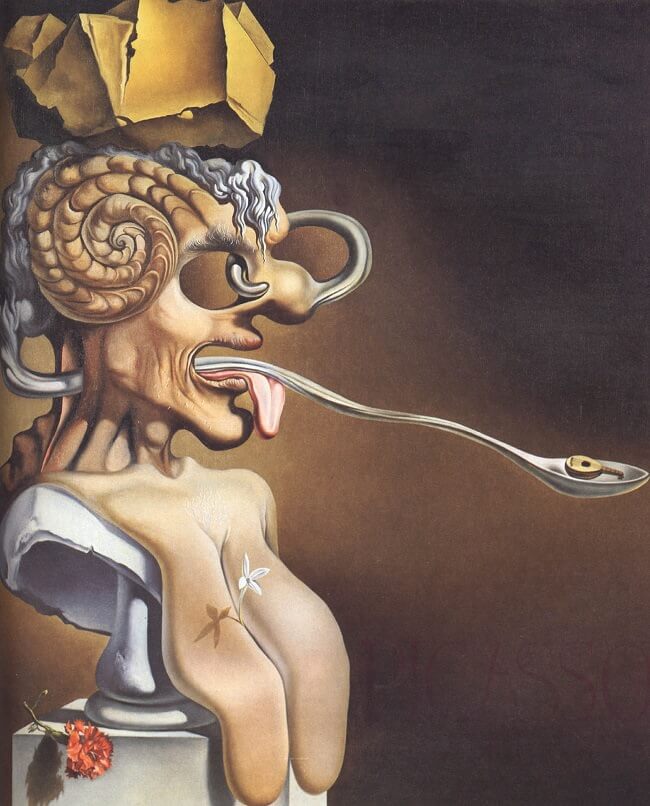Portrait of Picasso, 1947 by Salvador Dali

Dali and Picasso were the most famous artists of their time. Although born more than 20 years apart (Picasso in 1881, Dali in 1904), both artists were shaped by the cultural heritage of their native Spain and propelled into modern art by the intellectual vitality of Barcelona in the 1890s and first decades of the 20th century. Dali's admiration for the older artist was boundless. When he first traveled to Paris in 1926, Dali paid homage to Picasso by telling the already world-renowned master that he had come to meet Picasso before even visiting the Louvre. In following decades, Dali and his wife, Gala, deluged Picasso with about 100 letters and postcards currying favor.
It's a pretty sure bet that Picasso wasn't thrilled with Salvador Dali's "portrait" of him! Indeed, Dali went on to claim that Picasso was a "destroyer" of art, concerned with ugliness, while Dali embraced beauty. After all, the elder artist produced all those crude and coarse canvases with facile distortions of people's faces and forms in his numerous canvases.
In Portrait of Picasso, in the collection of the great Teatru-Museu Dali in Figueres, Spain, Dali respectfully places his hapless subject on a pedestal, though the carnation might be what one places on a tombstone! The ambivalence and paradox continue: the lute in the elongated spoon, which extends from Picasso's brain, is said to be "the symbol of the lover," according to one authority, yet the rock on Picasso's head, his drooping tongue and chest, and the overall deformity of his facial characteristics seem anything but flattering.























